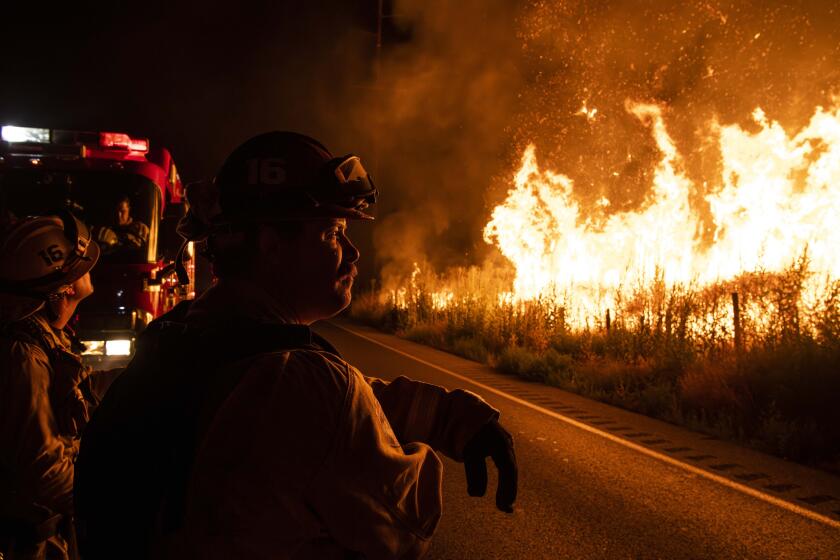Health Chief Says Residents Not at Risk
- Share via
Citing studies by state health officials, Ventura County’s top medical officer said Thursday that residents will face no major health threat from malathion spraying, but should take common-sense precautions to avoid exposure.
“There’s no evidence to suggest an increased risk” of health problems, said Dr. Gary Feldman, Ventura County’s public health officer.
“I think based on what we know, the decision (to spray) is a responsible one,” he said.
Gov. Pete Wilson is expected to sign an emergency declaration today that will order malathion spraying to begin next week.
But in Riverside County--where the pesticide was spewed over urban areas in February--public health officials remain skeptical.
After helicopters blanketed the cities of Corona and Norco with a mist of malathion and molasses-like bait, more than 240 people complained of problems including skin rashes, asthma attacks, hives and nausea.
Of those, health officials concluded that seven to nine people--out of 60,000 to 70,000 exposed--had recurring respiratory or skin problems so specific that a malathion reaction was the most likely cause.
“You have to decide whether you think that’s a lot or a little. My point was that there was a health effect to a few people,” said Dr. Bradley Gilbert, public health officer for Riverside County.
Ever since the Mediterranean fruit fly appeared in California, health concerns have dominated the emotional debate surrounding the use of pesticides.
A 500-page report released by the state Department of Health Services in 1991 concluded that malathion spraying poses no serious threat to the majority of residents.
But echoing Gilbert’s concerns, the study acknowledged for the first time that certain groups of people are more vulnerable to skin rashes, allergic responses and other ailments. Children, the elderly and people suffering respiratory problems are the most at risk from short-term effects, the study reported. And the state recommended further study of long-term exposure.
Thursday, at a press conference in Camarillo where aerial spraying plans were announced, state health officials advised residents in the spray zone to wash off their children’s playground equipment and to rinse their skin if contact occurs.
Seeking to reassure residents, Kimberly Belshe, director of the state Department of Health Services, said her agency would not endorse malathion if it were not safe.
“Malathion is among the most studied pesticides in use,” she said.
To anti-spraying activists, those studies and statements mean little. In Los Angeles and Riverside counties, groups formed to oppose malathion spraying remain convinced that health effects are much more widespread that what has been reported.
“I think the citizens’ rights are being abused,” Los Angeles resident Lisabeth Hush said. During the 1989 and 1990 sprayings of the Los Angeles Basin, Hush said she entered the hospital twice with rapid heartbeats, and suffered what she said were other symptoms.
In Ventura County, residents began reacting to the news Thursday as health care facilities began planning for the expected nighttime flyovers.
St. John’s Pleasant Valley Hospital, which falls inside the spray zone, will shut down the air ventilation system and recirculate air inside the complex during spraying. Patients will be kept inside.
More to Read
Sign up for Essential California
The most important California stories and recommendations in your inbox every morning.
You may occasionally receive promotional content from the Los Angeles Times.










